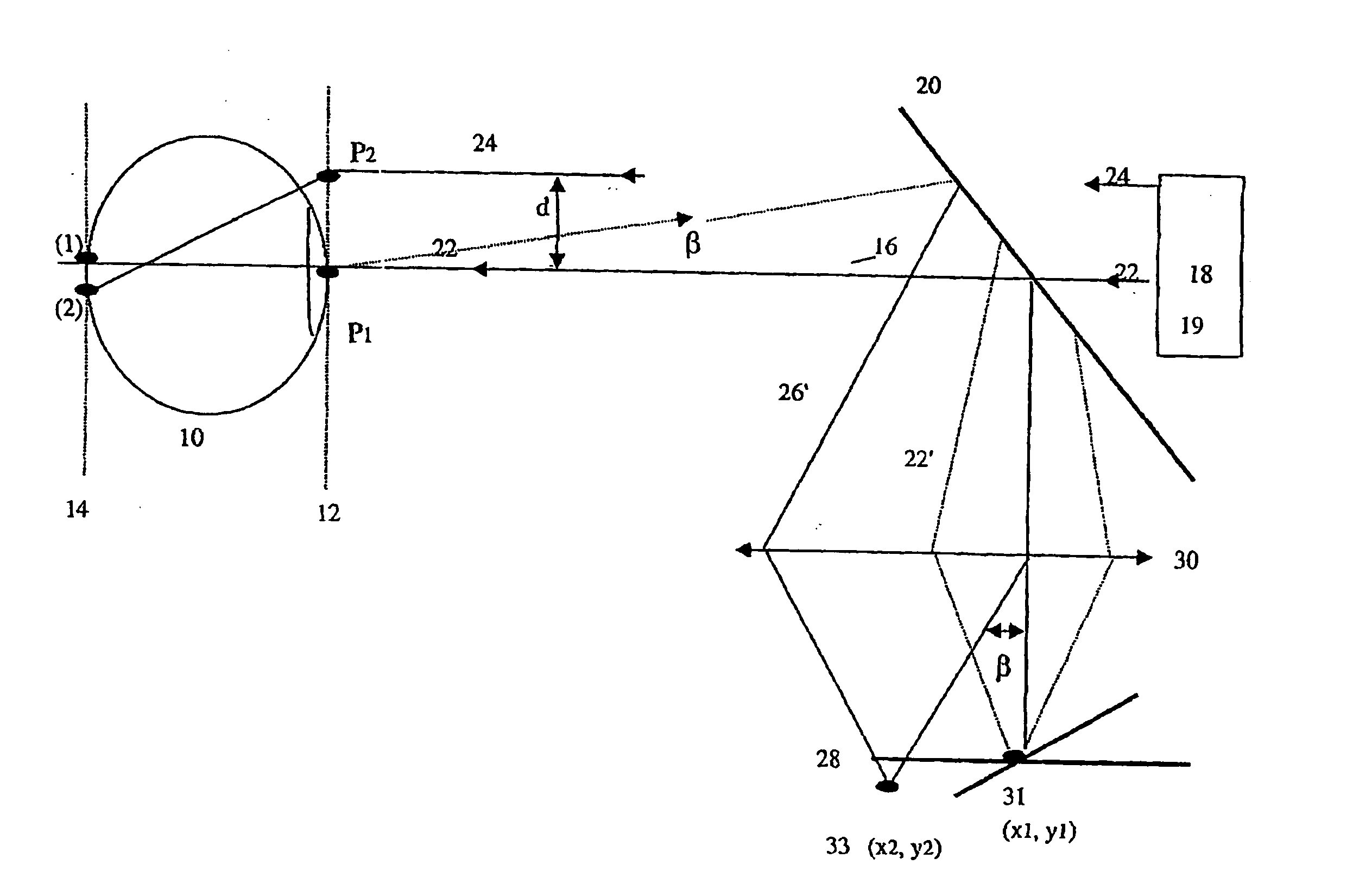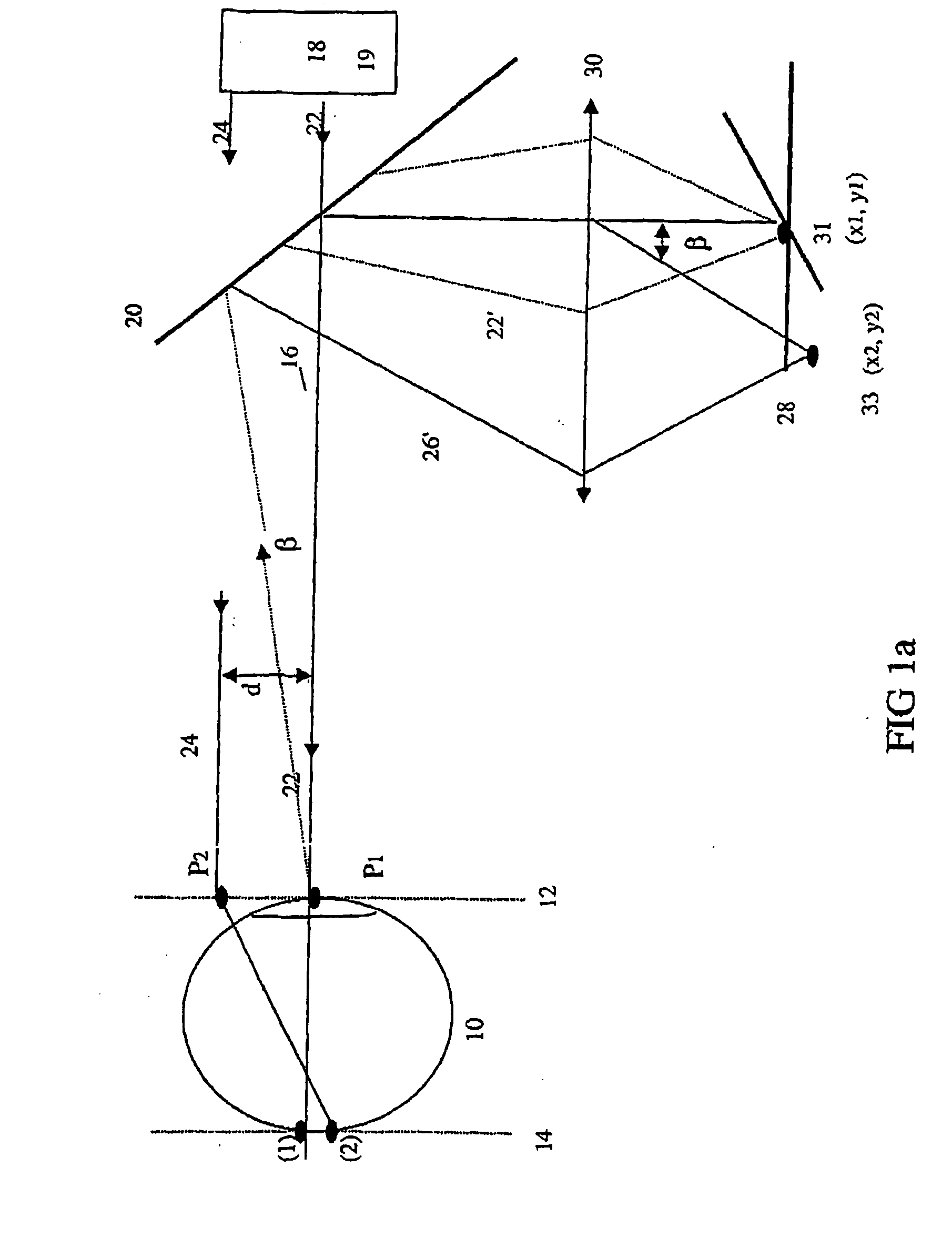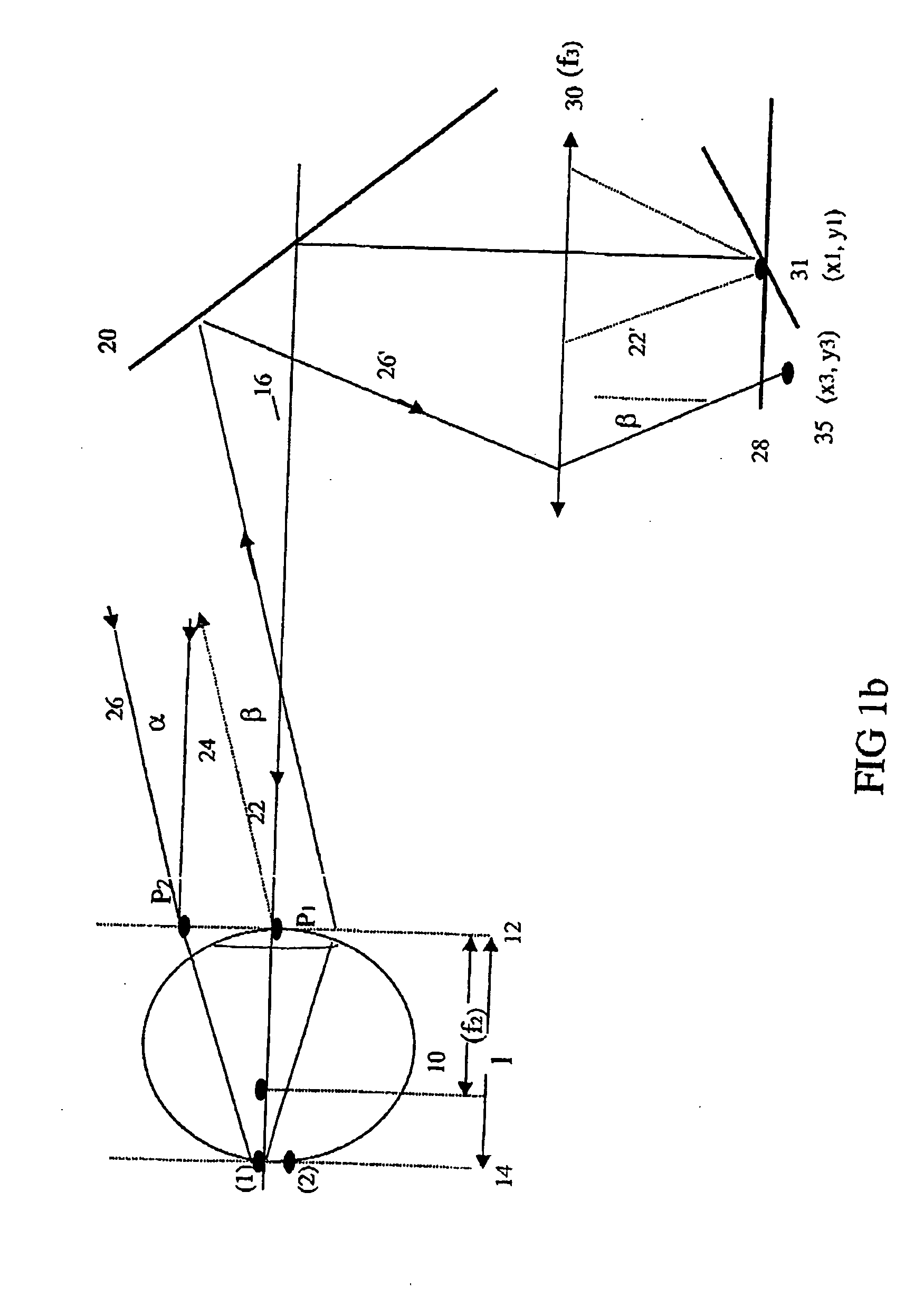Sequential scanning wavefront measurement and retinal topography
a topography and wavefront technology, applied in the field of ophthalmic wavefront and topography measurement, can solve the problems of low signal to noise ratio, affecting the accuracy of sequential scanning wavefront technique, and affecting the accuracy of sequential scanning wavefront measurement, etc., to achieve the effect of improving the accuracy of sequential scanning wavefront technique and accurate measurement of wavefron
- Summary
- Abstract
- Description
- Claims
- Application Information
AI Technical Summary
Benefits of technology
Problems solved by technology
Method used
Image
Examples
Embodiment Construction
[0018] A preferred embodiment of the invention for more accurately measuring a wavefront aberration of an eye using a sequential scanning technique is described in connection with FIGS. 1a and 1b. In FIG. 1a, an eye 10 to be measured has a representative anterior corneal plane 12 and a representative retinal plane 14. A reference axis 16 is represented by the visual axis of the eye as it is fixated on a target 18. A beam splitter 20 allows first and second parallel input beams 22, 24 to reach the cornea from a laser source 19 incorporating a scanning apparatus (not shown), and directs return beams scattered from the retinal plane through an imaging lens 30 to a detector 28. First and second beams 22, 24 are preferably collimated laser beams having a diameter between about 0.2 mm to 2.0 mm and more preferably between about 0.4 mm to 0.5 mm. The wavelength range of the input beam is preferably between about 400 nm to 1200 nm and more preferably in the near IR range of about 700 nm to ...
PUM
 Login to View More
Login to View More Abstract
Description
Claims
Application Information
 Login to View More
Login to View More - R&D
- Intellectual Property
- Life Sciences
- Materials
- Tech Scout
- Unparalleled Data Quality
- Higher Quality Content
- 60% Fewer Hallucinations
Browse by: Latest US Patents, China's latest patents, Technical Efficacy Thesaurus, Application Domain, Technology Topic, Popular Technical Reports.
© 2025 PatSnap. All rights reserved.Legal|Privacy policy|Modern Slavery Act Transparency Statement|Sitemap|About US| Contact US: help@patsnap.com



